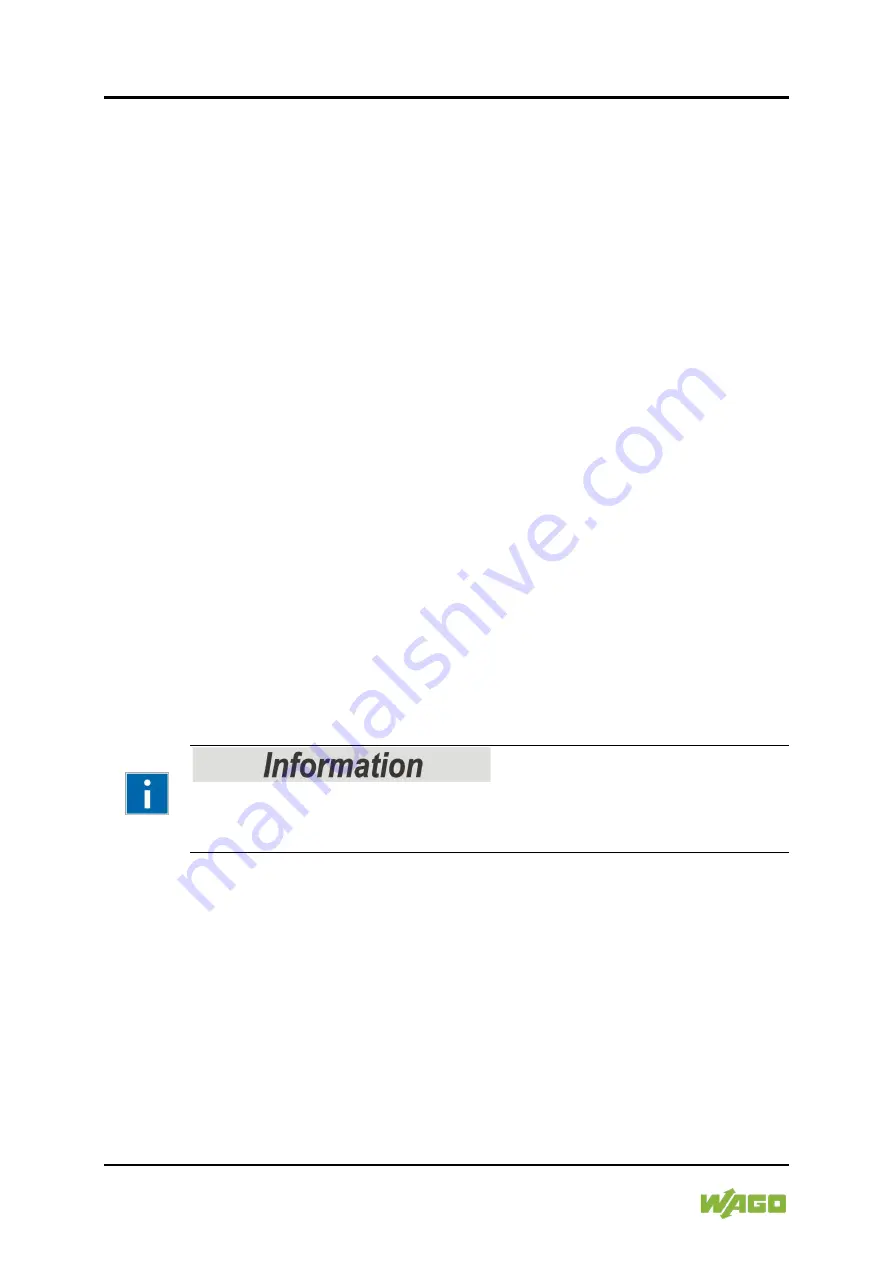
84 Function Description
WAGO-I/O-SYSTEM 750 XTR
750-352/040-000 FC ETHERNET G3 XTR
Manual
Version 1.3.0
Pos: 64.13 /Serie 750 ( WAGO-I/O-SYST EM)/Funkti onsbeschrei bung/D atenaustausch/Datenaustausch - D atenaustausch EtherNet/IP-Master und I/O-Modul e @ 6\mod_1256050145625_21.docx @ 43322 @ 3 @ 1
7.3.3
Data Exchange between EtherNet/IP Master and I/O
Modules
The data exchange between EtherNet/IP master and the I/O modules is
objectoriented. Each node on the network is depicted as a collection of objects.
The “assembly” object specifies the structure of the objects for the data
transmission. With the assembly object, data (e.g. I/O data) can be combined into
blocks (mapped) and sent via a single message connection. Thanks to this
mapping, less access to the network is necessary.
There is a distinction between input and output assemblies.
An input assembly reads in data from the application via the network or produces
data on the network.
An output assembly writes data to the application or consumes data from the
network.
The fieldbus coupler / controller provides a fixed number of assembly instances
(static assembly).
After switching on the supply voltage, the I/O data from the input and output
process image are assigned to the respective assembly instances. The
assignment takes place in blocks of digital and analog input and output data.
Usually the data exchange takes place using I/O connections. When the
connection is established, the assembly instances (and thus the I/O data) to be
transferred in the connection are selected. Subsequently, the associated I/O data
can be read and/or written by the master.
Additional Information:
The assembly instances for the static assembly are described in the section
“EtherNet/IP”.
Pos: 65 /D okumentation allgemei n/Glieder ungselemente/---Seitenwechsel--- @ 3\mod_1221108045078_0.docx @ 21810 @ @ 1
















































